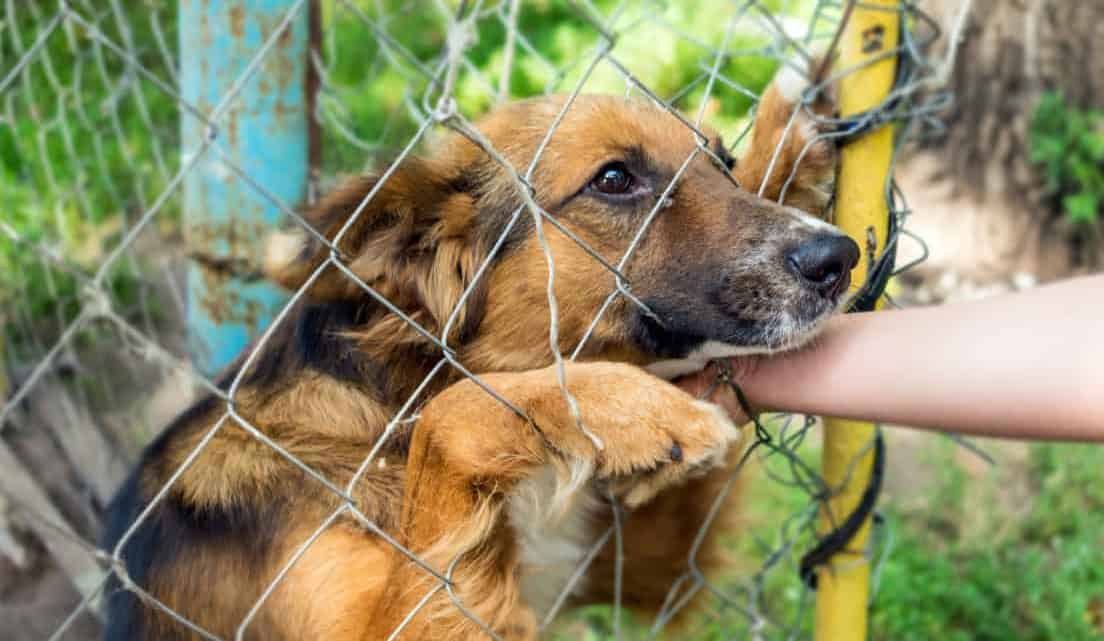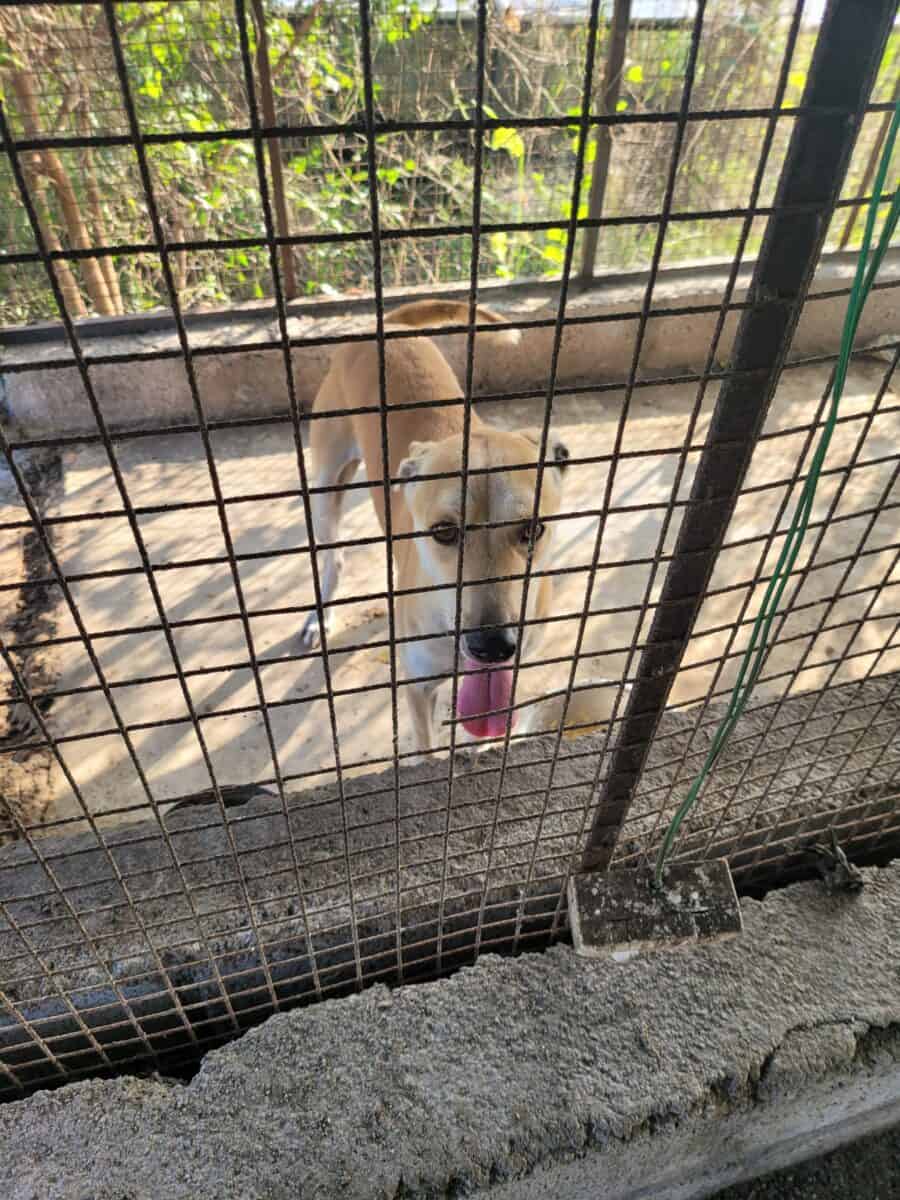Adopting a rescue dog is one of the most rewarding decisions you can make, offering a second chance at a loving home to a deserving furry friend. However, it also comes with a unique set of responsibilities and considerations.
But don’t worry, as this roadmap will guide you through every step of the adoption journey, including:
- Pre-adoption considerations
- Navigating the adoption process
- Post-adoption checklist
- Long-term considerations
- Emergency Preparedness
- Supporting the rescue cause
Let’s start this wonderful adventure together – a journey of love, learning, and the joy of giving a rescue dog a forever home.

Before Adoption
1. Assess Your Lifestyle
Understanding your lifestyle and how a dog will fit into it is crucial for a successful adoption. Here are key aspects to consider:
Time Commitment
- Daily Routine: Consider how many hours you’ll be away from home daily. Dogs, especially rescue dogs, need consistent interaction and attention.
- Exercise Needs: Different breeds have varying energy levels. Reflect on how much time you can realistically dedicate to exercising your dog daily.
- Training Time: New dogs, particularly rescues who may have had inconsistent training backgrounds, require time for training and behavior adjustment.
Living Environment
- Space: Evaluate the space you have. Larger breeds or high-energy dogs might need more room to move around.
- Living Conditions: Consider factors like whether you live in an apartment or a house, have a yard, or have restrictions in your living area regarding pets.
Family Dynamics
- Children and Other Pets: If you have children or other pets, consider how a new dog will integrate. Some dogs are better suited to families, while others may thrive in a one-pet household.
- Allergies: Be aware of any allergies to certain dog breeds in the household.
Work-Life Balance
- Work Schedule: Think about your work hours. Will you be able to come home at lunch to check on your dog, or should you consider a doggy daycare or a dog walker?
- Travel Frequency: If you travel often, consider arrangements for your dog’s care in your absence.
Activity Level
- Physical Activity Preferences: Are you active and looking for a running partner, or do you prefer a more relaxed lifestyle compatible with a lower-energy dog?
- Outdoor Activities: Think about whether you’d like a dog that can accompany you on outdoor adventures like hiking or camping.
Long-Term Commitment
- Future Plans: Dogs can live for many years. Consider where you see yourself in the next 10-15 years and how a dog would fit into your long-term plans.
Personal Preferences
- Size Preference: Do you prefer a small, medium, or large dog? Your living space and lifestyle can influence this decision.
- Breed Characteristics: While many rescue dogs are mixed breeds, certain breed characteristics may better suit your lifestyle. For instance, some breeds are known for being great family pets, while others may require more experienced handling.
You can also check out our FAQs for New Adopters page.
2. Research Dog Breeds

While many rescue dogs are mixed breeds, understanding the traits of various breeds can be immensely helpful. This research can give you insight into the dog’s potential behavior, temperament, and health needs.
Common Breed Characteristics
- Energy Levels: Some breeds are known for their high energy and need extensive exercise (e.g., German Shepherds, Border Collies, or Australian Shepherds), while others are more laid-back (e.g., Great Dane or the English Bulldog).
- Size: Consider the breed’s average size. Larger breeds might require more space and exercise, while smaller breeds can be suitable for apartments.
- Temperament: Research breeds known for their temperament. Some breeds are known for being great with children (e.g., Labrador Retrievers, Golden Retrievers), while others might be more independent or reserved (e.g., Beagle, Chow Chow, or Siberian Husky).
Health Considerations
- Lifespan: Different breeds have varying average lifespans. Smaller breeds often live longer than larger breeds.
- Breed-Specific Health Issues: Some breeds are prone to certain health problems. For instance, large breeds can be susceptible to hip dysplasia, while brachycephalic breeds (like Pugs and Bulldogs) can have respiratory issues.
Grooming Needs
- Coat Type: The breed’s coat type can determine the amount of grooming needed. Breeds with longer hair may require regular grooming, while short-haired breeds might need less.
- Shedding: Some breeds shed more than others. If you or a family member has allergies, consider breeds that are known to be hypoallergenic.

Behavioral Traits
- Training and Socialization Needs: Some breeds are known for being easy to train (e.g., Poodles, German Shepherds), while others might be more stubborn or independent.
- Prey Drive: Certain breeds have a high prey drive and may not be suitable for households with small pets.
Rescue and Mixed Breed Considerations
- Mixed Breed Advantages: Mixed breed dogs often have fewer health issues due to their genetic diversity.
- Temperament: For mixed breeds, ask the shelter or rescue about any known behavioral traits or observations of the dog’s personality.
Utilizing Breed Information
- Match Lifestyle: Use breed information to find a dog that matches your lifestyle. For instance, if you’re active, a high-energy breed might be a good fit.
- Adaptability: Be prepared for variability, especially with mixed breeds. They can exhibit a range of traits from their breed mix.
Engaging with Experts
- Consult Shelter Staff: Shelter staff can provide insights into a dog’s behavior and how it may align with certain breed characteristics.
- Professional Advice: Consider consulting with a veterinarian or a dog behaviorist for advice on breed traits and suitability.

3. Financial Planning
Preparing financially for a new dog, especially a rescue, is crucial. Here’s a breakdown of the costs and considerations:
Initial Costs
- Adoption Fees: These can vary greatly depending on the shelter or rescue organization.
- Initial Veterinary Visit: Essential for a wellness check and any necessary vaccinations or treatments.
- Spaying/Neutering: If not already done by the shelter.
- Microchipping: For identification and safety.
- Essential Supplies:
- Food and Water Bowls: Durable and appropriately sized.
- Dog Bed and Crate: For comfort and training purposes.
- Collar and Leash: Essential for walks and identification.
- Dog Food: High-quality food suited to the dog’s age, size, and health.
- Grooming Supplies: Brushes, nail clippers, shampoo, etc., depending on the breed.
- Toys and Chew Items: To keep the dog entertained and help with dental health.
Ongoing Costs
- Food: Regular purchase of quality dog food.
- Veterinary Care: Routine check-ups, vaccinations, flea, tick, and heartworm prevention.
- Pet Insurance: To help cover unexpected medical expenses, though this is optional.
- Grooming: Professional grooming costs, if the breed requires or if preferred.
- Training Classes: Especially important for socialization and behavior training in the early stages.
- Dog Walking or Daycare Services: If your lifestyle requires these services.
Emergency and Unexpected Costs
- Emergency Veterinary Care: For accidents or sudden illnesses.
- Medications: For any chronic conditions or unexpected illnesses.
- Behavioral Training: If behavioral issues arise that require professional intervention.
Long-Term Financial Planning
- Savings for Pet Care: Establishing a savings fund for your dog can help manage unexpected expenses.
- Budgeting for the Dog’s Life: Remember that dogs can live many years, and the commitment is long-term. Budget for potential increases in medical care as the dog ages.
Cost-Saving Tips
- Adopt During Promotions: Some shelters offer reduced adoption fees during special events or for certain dogs.
- DIY Grooming: Learn to groom your dog at home to save on professional grooming costs.
- Buy in Bulk: Purchase food and supplies in bulk for discounts.
- Preventative Care: Investing in preventative care can reduce the risk of more costly treatments later.
Additional Considerations
- Travel Costs: If you travel and need to board your dog or hire a pet sitter.
- End-of-Life Care: Consider the costs associated with elderly dog care, including potential end-of-life decisions.

4. Home Preparation
Properly preparing your home for a new rescue dog is crucial for their safety and comfort, as well as for easing their transition into a new environment. Here’s how to create a welcoming and secure space:
Securing Your Home
- Remove Hazards: Look for and remove anything that could harm the dog, like toxic plants, small objects that could be swallowed, and accessible cords or wires.
- Secure Trash and Food: Ensure trash cans are dog-proof and food is stored where the dog can’t access it.
- Safeguard Windows and Balconies: Ensure windows and balconies are secure to prevent falls or escapes.
Creating a Safe Space
- Designate a ‘Dog Zone’: Set up a specific area where your dog can feel secure, like a corner with a bed and toys.
- Crate Training: If you plan to crate train, choose a crate that’s the right size for your dog and place it in a quiet but accessible area.
- Rest Area: Ensure the dog has a quiet place to retreat to, away from high-traffic areas, which is especially important in the early days of adjustment.
Dog-Proofing Your Home
- Furniture and Belongings: Consider using covers for furniture and keeping personal belongings out of reach.
- Gates and Barriers: Use baby gates or barriers to restrict access to certain areas of the house, if necessary.
- Hazardous Substances: Store cleaning supplies, medications, and chemicals out of reach.
Setting Up for Feeding
- Feeding Area: Designate an area for eating and drinking, away from high-traffic zones, to give your dog a calm eating environment.
- Food Storage: Store dog food in a secure, airtight container to maintain freshness and prevent pests.
Outdoor Spaces
- Secure Fencing: Check your yard for any gaps in the fence where a dog could escape.
- Remove Garden Hazards: Ensure there are no toxic plants, fertilizers, or insecticides accessible in the garden.
- Shelter and Shade: Provide a sheltered area and plenty of shade for outdoor time.
Comfort Items
- Toys: Provide a variety of toys for entertainment and mental stimulation.
- Comfort Objects: Consider items like a dog blanket or a warm bed to make them feel at home.
Preparing for Accidents
- Cleaning Supplies: Have pet-safe cleaning supplies on hand for accidents, especially during the initial house-training period.
- Training Pads: If house training is needed, training pads can be a helpful tool.
Introducing Your Home
- Gradual Introduction: Slowly introduce your dog to different areas of the home, allowing them to explore and become comfortable at their own pace.

5. Discuss with Household Members
Bringing a new rescue dog into your home is a significant decision that impacts all household members.
Effective communication and agreement among everyone involved are crucial for a smooth transition and a positive experience. Here are key aspects to address:
Understanding Responsibilities
- Care Duties: Clearly define who will be responsible for feeding, walking, training, grooming, and vet visits.
- Schedules: Coordinate everyone’s schedules to ensure the dog is not left alone for extended periods.
- Training Consistency: Agree on training methods and commands to use. Consistency is key in training and helping the dog feel secure.
Discussing Expectations and Concerns
- Lifestyle Changes: Talk about how a dog will change your daily routines, including weekends and holidays.
- Financial Commitment: Ensure everyone understands the financial responsibility, including food, vet care, and unexpected expenses.
- Address Concerns: Give each household member a chance to voice any concerns or questions they might have about adopting a dog.
Setting Ground Rules
- House Rules: Decide where the dog will be allowed and any off-limit areas. Establish rules like whether the dog will be allowed on furniture.
- Behavior Expectations: Discuss how to handle potential issues like barking, jumping, or chewing.
Involving Children
- Teaching Responsibility: If you have children, involve them in the care of the dog according to their age and capability.
- Safety and Interaction: Teach children how to safely interact with the dog, emphasizing gentle behavior and recognizing the dog’s body language.
Considering Other Pets
- Introductions: Plan how you will introduce the new dog to existing pets.
- Monitoring Interactions: Initially, closely monitor interactions between the new dog and existing pets.
- Separate Spaces: Ensure each pet has its own space where they can retreat if needed.
Preparing for Challenges
- Adjustment Period: Understand that there will be an adjustment period, and the dog may exhibit anxiety or behavioral issues initially.
- Commitment to Work Through Issues: Commit as a family to work through any challenges that arise.
Emotional Preparation
- Emotional Investment: Acknowledge that everyone will form emotional attachments at different rates.
- Loss and Grief: If the adoption follows the loss of a previous pet, discuss feelings and expectations around this new addition.
Adoption Process

The ‘adoption process’ is a decisive phase where you’ll connect with your future companion.
This roadmap guides you through selecting the right shelter, asking important questions, understanding adoption requirements, and ensuring a harmonious introduction with family and other pets.
1. Visit Shelters and Rescue Groups
- Research Options: Look into local shelters and rescue organizations, including breed-specific rescues if you have a preference.
- Multiple Visits: Plan to visit several times. The right dog may not be there on your first visit, or you might need multiple interactions to make a decision.
- Interaction Time: Spend quality time with potential dogs. Observe their behavior in and out of their kennels and during walks or playtime.
- Ask About Foster Programs: Some organizations offer foster-to-adopt programs, allowing you to understand the dog in a home environment before making a commitment.
2. Ask Questions
- Background Information: Inquire about the dog’s history, how they came to the shelter, and any known past.
- Health Status: Ask about any known health issues, current medications, and vaccination status.
- Behavioral Assessment: Request information on the dog’s behavior, including temperament, interactions with other animals, and any known behavioral challenges.
- Special Needs: If the dog has special needs, discuss what that would entail in terms of care, expenses, and lifestyle adjustments.
3. Understand the Adoption Requirements
- Adoption Policies: Familiarize yourself with the shelter’s or rescue group’s adoption process and policies. This might include home visits, background checks, or reference requirements.
- Adoption Fees: Clarify the adoption fees and what they include (e.g., spaying/neutering, microchipping, initial vaccinations).
- Return Policy: Understand the policy if the adoption doesn’t work out. Many organizations will require that the dog be returned to them.
- Post-Adoption Support: Ask if they offer any post-adoption support, like training resources or veterinary care discounts.
4. Meet-and-Greet
- Introduce to Family Members: Bring all household members to meet the dog to observe interactions.
- Meet with Current Pets: If you have other pets, arrange a supervised meeting with the potential new dog under the guidance of shelter staff.
- Neutral Environment: For the first introduction with existing pets, choose a neutral environment to prevent territorial behavior.
- Observe Body Language: Pay close attention to the body language of both the new dog and your existing pets to ensure compatibility.
Post Adoption

Post-adoption is a key period for adjustment and bonding. In this section, we cover vital topics like veterinary care, nutrition, training, and more to ensure a seamless and nurturing transition for your new rescue dog into its forever home.
1. Veterinary Care
- Initial Vet Visit: Schedule a check-up within the first week of adoption to establish a health baseline and address any immediate concerns.
- Vaccinations: Ensure all vaccinations are up-to-date and set a schedule for future vaccinations as advised by the vet.
- Spaying/Neutering: If not done before adoption, discuss the best time to have this procedure with your vet.
- Dental Care: Ask about dental hygiene and schedule regular dental check-ups.
- Parasite Prevention: Set up a routine for flea, tick, and worm prevention.
- Health Insurance: Consider purchasing pet health insurance to help manage future veterinary costs.
2. Nutrition
- Quality Diet: Choose a high-quality diet suitable for the dog’s age, size, and health. Ask the vet for recommendations if needed.
- Feeding Schedule: Establish a consistent feeding routine to help your dog feel secure and manage their weight.
- Special Dietary Needs: Be aware of any special dietary needs or allergies and discuss them with your vet.
- Hydration: Ensure constant access to fresh water.
3. Training and Socialization
- Basic Training: Begin with basic commands like sit, stay, come, and house training. Consistency is key.
- Socialization: Gradually introduce your dog to various people, animals, environments, and experiences to build confidence and good behavior.
- Behavioral Issues: Be patient with any behavioral issues. Consider enlisting a professional dog trainer if needed.
- Positive Reinforcement: Use positive reinforcement techniques such as treats, praise, and play to encourage good behavior.
4. Exercise
- Regular Exercise: Ensure your dog gets appropriate exercise based on their breed, age, and energy level.
- Playtime: Engage in play activities to stimulate your dog’s mind and body.
- Safe Environments: Choose safe environments for off-leash play, and always supervise your dog when outdoors.
- Routine: Establish a routine for walks and playtime to help your dog feel secure.
5. Emotional Bonding
- Quality Time: Spend quality time daily with your dog to strengthen your bond.
- Gentle Handling: Use gentle handling and calm, reassuring tones to build trust.
- Understanding and Patience: Understand that building a bond may take time, especially with rescue dogs who may have had difficult pasts.
- Comfort and Security: Provide a comfortable and secure environment, including a private space where your dog can retreat.
6. Identification
- Microchipping: Ensure your dog is microchipped and the registration details are up to date.
- Collar and ID Tag: Always have a collar with an ID tag containing your contact information on your dog.
- Local Regulations: Familiarize yourself with local licensing requirements and ensure your dog is registered if required.
Long-Term Considerations

This roadmap focuses on the ongoing commitment to your dog’s health, behavior, and education, ensuring a fulfilling and enduring relationship with your furry friend for years to come.
1. Ongoing Health Care
- Regular Vet Check-ups: Schedule annual or bi-annual veterinary visits to monitor your dog’s overall health and catch any issues early.
- Vaccination Updates: Keep up with vaccination schedules as recommended by your vet.
- Parasite Prevention: Continue regular flea, tick, and worm prevention to keep your dog healthy.
- Dental Health: Include regular dental check-ups and cleaning in your dog’s healthcare routine.
- Chronic Condition Management: Be prepared to manage any chronic conditions (like arthritis or diabetes) with medication, diet, and lifestyle changes.
- Weight Management: Monitor your dog’s weight to prevent obesity, which can lead to other health issues.
- Senior Dog Care: As your dog ages, they may require more frequent vet visits and special care for age-related issues.
2. Behavioral Support
- Continued Training: Continue training and socialization throughout your dog’s life to maintain good behavior and mental stimulation.
- Adapting to Changes: Be prepared to adjust your approach as your dog ages or if new behavioral issues arise.
- Professional Help: Don’t hesitate to seek professional help from a dog trainer or behaviorist for persistent or complex behavioral issues.
- Mental Stimulation: Provide ongoing mental stimulation through toys, games, and training to keep your dog engaged and prevent boredom.
3. Continued Education
- Stay Informed: Keep yourself updated with the latest information on dog care, health, and behavior. Resources include books, online articles, and dog owner forums.
- Community Involvement: Join local or online dog owner groups to share experiences and advice.
- Training and Workshops: Consider attending dog training workshops or classes to further your understanding and skills in handling and caring for your dog.
- Understanding Aging: Educate yourself about the signs of aging in dogs and how to care for a senior dog, including adjustments in diet, exercise, and healthcare.
Emergency Preparedness
Emergency Preparedness equips you with strategies and essential information to confidently handle unexpected situations and ensure the safety and well-being of your rescue dog in any emergency.
1. Have a Plan
- Natural Disasters: Prepare for various emergencies like earthquakes, floods, or fires. This includes having an evacuation plan that accommodates your dog.
- Emergency Kit: Create an emergency kit for your dog, including food, water, medications, vaccination records, a first-aid kit, and any special care instructions.
- Safe Haven: Identify safe places to take your dog in an emergency, such as pet-friendly hotels or shelters.
- Training: Train your dog to respond to emergency commands and to be comfortable with sudden movements or changes, which can be crucial during emergencies.
- Identification: Ensure your dog’s microchip information is up-to-date and that they wear a collar with identification at all times, as this can be crucial in reuniting you with your pet if you are separated.
2. Emergency Contacts
- Veterinarian Contact: Keep your vet’s contact information easily accessible, including after-hours emergency numbers.
- 24-Hour Animal Hospital: Identify a nearby 24-hour animal hospital and keep their contact information handy.
- Local Animal Control: Have the contact details for local animal control in case of emergencies involving other animals or if you find a lost pet.
- Pet Poison Helpline: Keep the number for a pet poison helpline, in case your dog ingests something toxic.
- Support Network: Establish a network of neighbors, friends, or family who can help with your pet in a pinch.
Supporting the Cause

This section is purely optional. Supporting the cause emphasizes the importance of staying involved and giving back, offering ways to contribute to animal welfare and the wider rescue community beyond your own adoption journey.
Stay Involved
- Volunteering: Offer your time and skills to the shelter or rescue organization. This could include helping with events, fostering animals, or assisting with daily operations.
- Donations: Consider making financial donations or donating supplies like food, toys, and bedding. Even small contributions can make a big difference.
- Awareness Campaigns: Help spread awareness about the importance of dog rescue and adoption. Use your social media, blog, or community events to share information.
- Adoption Events: Participate in or help organize adoption events to help more dogs find homes.
- Educational Efforts: Contribute to educational efforts about responsible dog ownership, spaying/neutering, and the benefits of adopting rescue animals.
- Advocacy: Advocate for animal welfare policies at the local or national level. This can include supporting legislation that benefits animal welfare or speaking out against inhumane practices.
You can also check out our Checklist For New Adopters here.
Rescue. Rehabilitate. Repeat.




